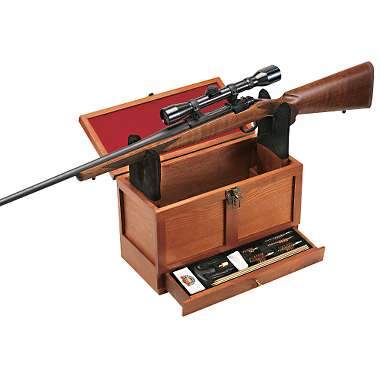

 The Accurate Reloading Forums
The Accurate Reloading Forums  THE ACCURATE RELOADING.COM FORUMS
THE ACCURATE RELOADING.COM FORUMS  Guns, Politics, Gunsmithing & Reloading
Guns, Politics, Gunsmithing & Reloading  Gun Cleaning Forum
Gun Cleaning Forum  Ultrasonic Aluminum Test - With Photo's
Ultrasonic Aluminum Test - With Photo'sGo  | New  | Find  | Notify  | Tools  | Reply  |  |
| one of us |
 I conducted this test in an effort to see actual results of what happens to unprotected Aluminum when subjected to Ultrasonic cleaning. The test sample is a piece of T-6 grade Aluminum I got from work, and applied a 500 finish to, then went over it with Happich Simichrome Polish to achieve as smooth of finish as possible. The above photo shows the finished piece before being subjected to any treatments. It's size is approx. 2 1/2" X 1 1/2" X 1/2" thick.  This was after 9-1/2 minutes in warm water with a small amount of Palmolive Dish Soap. There is not much change except for some very light, hard to see speckling.  This was after 21 minutes exposure to the Ultrasonic cleaner. More profound frosting of the metal has occurred, along with some enhanced speckling. The frosting appears to have taken on the circular pattern of the plastic tray it was resting on with multiple speckles occurring at 9, 12, and 3 O'clock positions around it.  This was after a full 30 minutes of Ultrasonic exposure. Much more profound frosting has occurred, along with deeper speckles. This would no doubt effect the finish of an Aluminium framed pistol if it had any degree of polish on it. While this test wasn't very scientific, I would conclude that it would be risky to expose any Aluminum firearm parts to Ultrasonic cleaning. I wish the photos were better, but you can see the Ultrasonic treatment did in fact effect the finish, which is what I was trying to determine. Bill T. | ||
|
| one of us |
A scientific test would require a perfectly clean surface then use distilled or deionized water. Things like the soap or minerals in the water can have a great effect on the aluminum as can the pH of the water.. | |||
|
| One of Us |
One test of the efficency of an ultrasonic cleaner is to see if will make holes in thin aluminum foil. If the cleaner is working it will actually make very small holes in the foil which can be detected by holding the foil up and looking at a bright light. If you are cleaning a anodized and painted surface the effect is usually less as the paint is softer and less effected by the ultrasonic cleaning. Remmeber that an ultrasonic leaner works best on hard brittle matterials; the caviation introduced by the cleaning literally blasts holes in the surface material as the bubbles are formed and collapsed like a small shaped charge. This is why an ultrasonic cleaner will clean the brittle material out of the primer pockets but fail to remove any grease of gum left on the case. The Navy has a good filn on the effect - it may be posted on the web somewhere. | |||
|
| new member |
Do you know what the alloy of the test piece is? | |||
|
| one of us |
T-6. I would have to look up the exact metalurgical content. Bill T. | |||
|
| one of us |
T-6 indicates the heat treatment , not the alloy !! A very common alloy and HT is 6061 T-6. | |||
|
| Powered by Social Strata |
| Please Wait. Your request is being processed... |
|
 The Accurate Reloading Forums
The Accurate Reloading Forums  THE ACCURATE RELOADING.COM FORUMS
THE ACCURATE RELOADING.COM FORUMS  Guns, Politics, Gunsmithing & Reloading
Guns, Politics, Gunsmithing & Reloading  Gun Cleaning Forum
Gun Cleaning Forum  Ultrasonic Aluminum Test - With Photo's
Ultrasonic Aluminum Test - With Photo's

Visit our on-line store for AR Memorabilia

